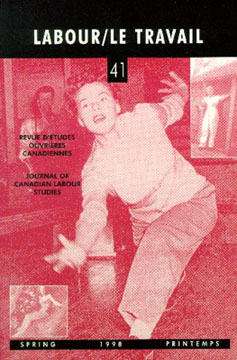Abstract
By the early 20th century, the changes taking place in western industrial capitalist nations prompted an adaptive shift in the socioeconomic delineation of human bodies, and in scientific theories about how they worked and how they could be put to work. Just as the rising social sciences borrowed from medicine to convey images of social malaise, medicine increasingly appropriated an industrial vocabulary to conceptualize bodily health. Depicted variously as a machine, a motor, a factory in itself, the human body absorbed industrial symbolism. Modern industry demanded an intensification of labour that made bodily efficiency paramount. The corresponding definition of health also shifted, from emphasis on physical endurance, which could be secured by simple replacement of outworn workers, to optimum labour efficiency, which had to be actively instilled in all workers, present and future. Scientific management programs were easily integrated with regulatory medical notions concerning the human body and human nature, as science, medicine and technology combined forces to promote a machine ethic that equated modernity, progress, efficiency, and national health. This paper considers the relationship between changing conceptualizations of the human body, developing medical influence and state regulation of health, and attempts to "Taylorize" the labour process in early 20th century Canada.
Résumé
Au début du vingtième siècle, les changements ayant lieu dans les pays capitalistes occidentaux ont provoqués une modification dans la représentation socio-économique des corps humains et des théories scientifiques sur leur fonctionnement et leur mise au travail. Au moment où les sciences sociales s'inspiraient de la médecine pour présenter une image de malaise social, la médecine appropriait de plus en plus un vocabulaire industriel pour conceptualiser la santé physique. Représenté de diverses façons —comme une machine, un moteur, une usine — le corps humain était investi de symbolisme industriel. L'industrie moderne demandait une intensification du travail qui fait le rendement physique de première importance. La définition de la santé change de façon correspondant, d'une importance particulière portée à l'endurance physique, qui pouvait être assurée par un simple remplacement des travailleurs épuisés, à l'optimisantion de l'efficacité au travail, qui devait être instillée dans chaque travailleur, présent et futur. Des programmes de gestion scientifique furent aisément intégrésaux notions de régulation médicale telles qu'appliquées au corps humain et à la nature humaine, au moment où la science, la médecine, et la technologie combinaient leurs forces pour promouvoir une éthique de la machine qui assimilie modernité, progrès, efficacité, et santé nationale. Cette étude considère la relation entre les conceptualizations changeantes du corps humain, l'influence médicale croissante et la régulation de la santé par l'Etat, et les efforts pour «taylorisé» le processus de travail dans la société canadienne du début du vingtième siècle.
